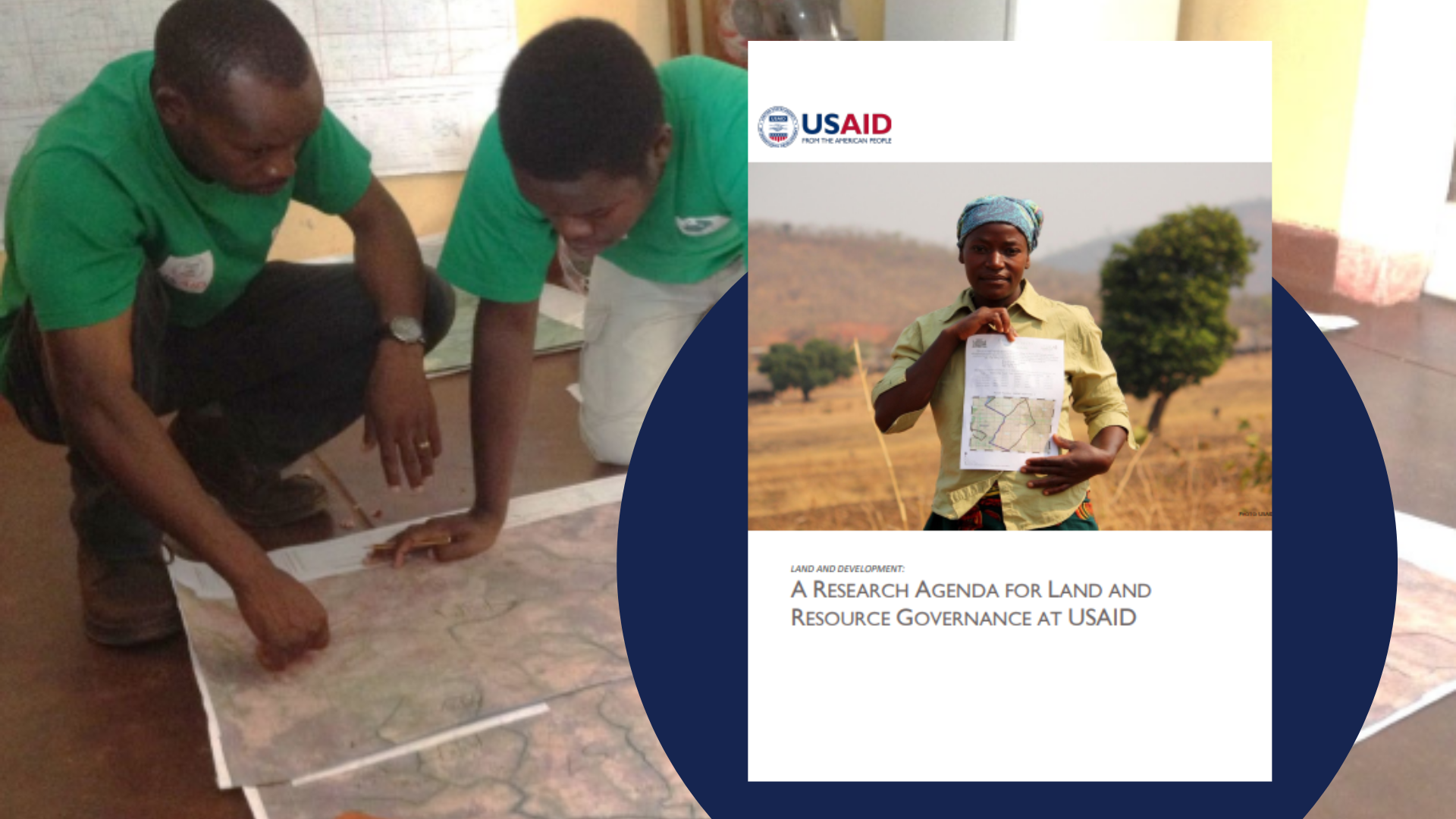This is the first attempt in almost two decades to synthesize USAID’s experience with LRG programs and the state of the evidence into a single document, which will guide USAID’s learning priorities on LRG in the coming years. In revisiting these issues, this Research Agenda relies upon others’ efforts to synthesize, systematize, and render accessible the enormous amount of accumulated evidence on the relationship between LRG and key USAID development objectives.

A thorough analysis of high-quality systematic reviews, meta-analyses, and other studies, has identified the following key findings on the state of the evidence:
- Insecure land tenure is widespread in the developing world, a condition that has far-reaching social, environmental, and economic consequences. Addressing tenure insecurity is necessary but is often not enough to guarantee positive development outcomes.
- Ample evidence links improvements in LRG with better economic growth.
- Formalizing land rights will not lead to improved access to formal credit, unless other conditions are also met. Yet, innovative financial models may prove viable, especially in Africa.
- Strengthening land rights can lead to substantial increases in on-farm investment, however more rigorous evidence is needed on how land rights are linked to productivity, food security, and income.
- Carefully constructed LRG policies – such as strengthening the rights of Indigenous Peoples and customary communities – in conjunction with other policy levers to protect forests, can reduce deforestation and help mitigate climate change, while also improving incomes and contributing to economic growth.
- Strengthening women’s land rights has a significant positive impact on women’s empowerment. However, research on this important topic remains thin, and the evidence base must be strengthened. Notably, more rigorous evidence is needed on the link between strengthening women’s land rights and poverty alleviation.
- Land is a significant driver of conflict, particularly in Africa. The twin forces of climate change and population growth will likely exacerbate land conflict in the near future. However, rigorous research on the extent to which LRG can decrease the likelihood and recurrence of conflict is scarce.
The review also provided insights into the methodological gaps in existing LRG research. Specifically:
- Surprisingly little rigorous research, including impact evaluations and longitudinal studies, compared to other development fields. In particular, a lack of rigorous research on the intersection of LRG and food security, conflict, fisheries, and urbanization. As a result, systematic reviews can examine only a narrow subset of LRG linkages.
- A lack of longitudinal studies on long-term LRG impact, especially in Africa, less so in Latin America and Asia.
- Too few studies investigate more than one link of the causal chain, and in particular too few studies examine links between LRG and multiple consecutive links in the causal chain. A realist synthesis approach may help fill this important gap in our understanding of the relationships between intervention, context, mechanism, and outcome.
- Too few studies employ mixed methods approaches that use qualitative and quantitative data collection and analysis.
- Studies too often measure tenure security at the household level, obfuscating potentially critical differences in how secure different members of the household feel, especially women and girls.
- Studies too often treat beneficiaries as a homogenous category, failing to account for differences between women and men, the old and the young, and the poor and the wealthy, among others.
- Few, if any, rigorous studies have examined the effects of statutory recognition of customary tenure.
- Too many studies use ‘title’ as shorthand for tenure security, failing to appreciate differences between perception and documentation.
- However, this is changing as the Sustainable Development Goal 1 indicator on land distinguishes between perception and documentation.
- Studies focus disproportionately on measuring the impact of titling programs, to the exclusion of measuring the impact of programs that combine multiple LRG interventions, such as titling and community governance, land administration, legal reform, conflict resolution, and social-behavioral change.
Based on this review of the evidence, coupled with insights from multiple LRG experts, USAID has identified research priorities organized by thematic and sectoral areas, and presented in section VI of this report.












































































































































































































